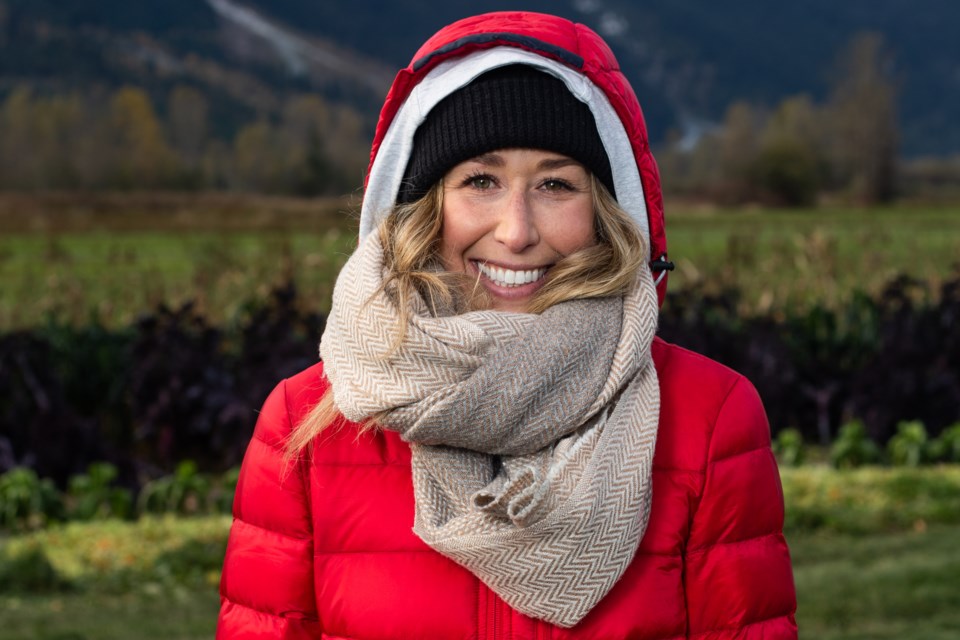No one is harder on Anna Segal than Anna Segal.
That much is clear of the skier who cut her teeth on the gum-tree-constellated slopes north of Melbourne, Australia; who represented her country in slopestyle at the 2014 Winter Olympics in Sochi, Russia; who threw down in the 2021 Blank Collective film, Tales from Cascadia; and who copped a stylie grab for photographer Mattias Fredriksson on a recent cover of Sweden’s Åka Skidor (the shooter’s 500th it turns out). Though quick to condemn her own slow learning when it comes to sledding, picking lines or building “shitty jumps” that still somehow deliver photographic gold, she’s just as quick to question her self-flagellation on social media. “[It all] goes to show there’s no point in getting frustrated while skiing—maybe one day I’ll learn to live by these words.”
Maybe. But some part of getting frustrated, pushing through, and levelling up is clearly working for Anna Segal.
It goes back to her days on the Australian mogul development team, where she’d play around in “crappy little Aussie parks” after training. Following a major knee injury in moguls, she switched to park full-time, inspired by freestylers Sarah Burke, Kristi Leskinen and Marie Martinod. Landing in North America, Segal headed to Aspen and threw herself at the park. By 2006 she felt ready to enter her first premier women’s slopestyle event—Queen’s Cup—where she competed against her heroes. Her first big result came at the next year’s U.S. Open. “It was a big, scary course but moguls had given me a good competition mindset. Sarah, Kristi and Marie were there, and though I didn’t have some of their tricks—and was skiing with a cast on my hand, black eye and scrapes on my face—I was solid enough to win.”
The next eight years on the international slopestyle circuit are a blur spun with glints of metal: gold, silver and bronze at the Winter X Games; gold at FIS Worlds; 2nd overall in the 2012 AFP World Tour; a 4th in the 2014 Winter Olympic Games.
Prior to the Olympics, nursing the chronic pain of multiple injuries, Segal already felt the urge to branch out, be a more rounded skier, and get in front of the camera. “I wanted to see what I could do in the backcountry because I enjoyed it and liked climbing uphill.”
The transition was neither quick nor easy. “It’s almost harder to bring tricks to the backcountry because there isn’t all the time for training on trampolines and in the park. I could throw 360s and backflips off anything, but time spent touring, learning mountain safety and sledding takes away some of that.”
As Segal persisted with her quest, she made another move. “At a World Cup in Colorado I was riding a lift with [fellow competitor] Yuki Tsubota. She asked what I was going to do after Sochi. I knew the fire was gone from competing, so I said ‘Probably just ski pow.’ Yuki told me Whistler was the best place in the world to do that.”
The idea stuck. But having only attended Whistler’s World Ski & Snowboard Festival to compete followed by partying in the village, she knew little of the mountains or community. “I didn’t have any close friends here so it was a scary move. I was in Whistler five years before I bought a place in Pemberton; it was more affordable, friends were moving there, and that’s where my partner lived, so it made sense.”
She spent her first year in Whistler skiing a lot of park, then started filming with local director Jeff Thomas. Though mostly ad campaigns, it was a stepping stone to Blank Collective. “The first season with Blank I went out a few days, then last year I got on as a main skier. Of course, I wanted to be charging right out of the gate, but I had to take a step back and learn a few skills. It was a struggle but a good experience.”
Segal is no stranger to taking things into her own hands. Along with younger sister Natalie—3rd overall on the 2013 Freeride World Tour and a 2014 National Geographic Young Explorer—Segal co-produced the 2018 film Finding the Line. “No one was knocking on our doors,” she says of the era when both were transitioning from their respective pro careers, “so we thought we’d do a sister project with a storyline. After six months of arguments and tears, we looked a bit deeper and it went from a one-season shoot to a three-year film that explored how each of us deals with fear in the mountains. It was like completing a master’s degree because it took every ounce of our knowledge and intelligence to finish. After that we just wanted to be athletes again.”
These days Segal is leaning into the opportunities of her new backyard and trying to be less hard on herself. She visits Natalie in Revelstoke, makes ski trips through northern B.C., and does outreach as an athlete ambassador for Protect Our Winters (POW) Canada. With all the uncertainty around travel, the upcoming winter remains an open book. “I’ve gotten used to not planning,” she says. “I’m happy to just stay around here and explore.”




